Welcome to the colourful and enchanting world of Indian Dresses, where a plethora of rich fabrics, vibrant colours, and intricate designs come together to create a fashion experience like no other. From elegant sarees to graceful lehengas, traditional salwar kameez to contemporary fusion wear, the variety and beauty of Indian dresses is truly awe-inspiring. Step into this cultural extravaganza as we unveil the different types of Indian dresses that form an integral part of the country’s diverse heritage. Each region of India boasts its unique style and flair when it comes to fashion, making Indian attire a true reflection of its rich and varied culture. Discover the flowing elegance of the saree, a quintessential Indian garment that has stood the test of time and remains a symbol of femininity and grace. Dive into the world of lehengas, the ornate and heavily embroidered skirts paired with blouses and dupattas, which are often worn for special occasions and weddings. Explore the versatile and comfortable salwar kameez, a two-piece or three-piece ensemble that can be styled in numerous ways. Join us on this exploration of Indian attire, where every garment tells a fascinating story and showcases the exquisite craftsmanship that India is renowned for. Get ready to be captivated by the beauty and diversity of Indian dresses!
Traditional Indian Dresses: Saree
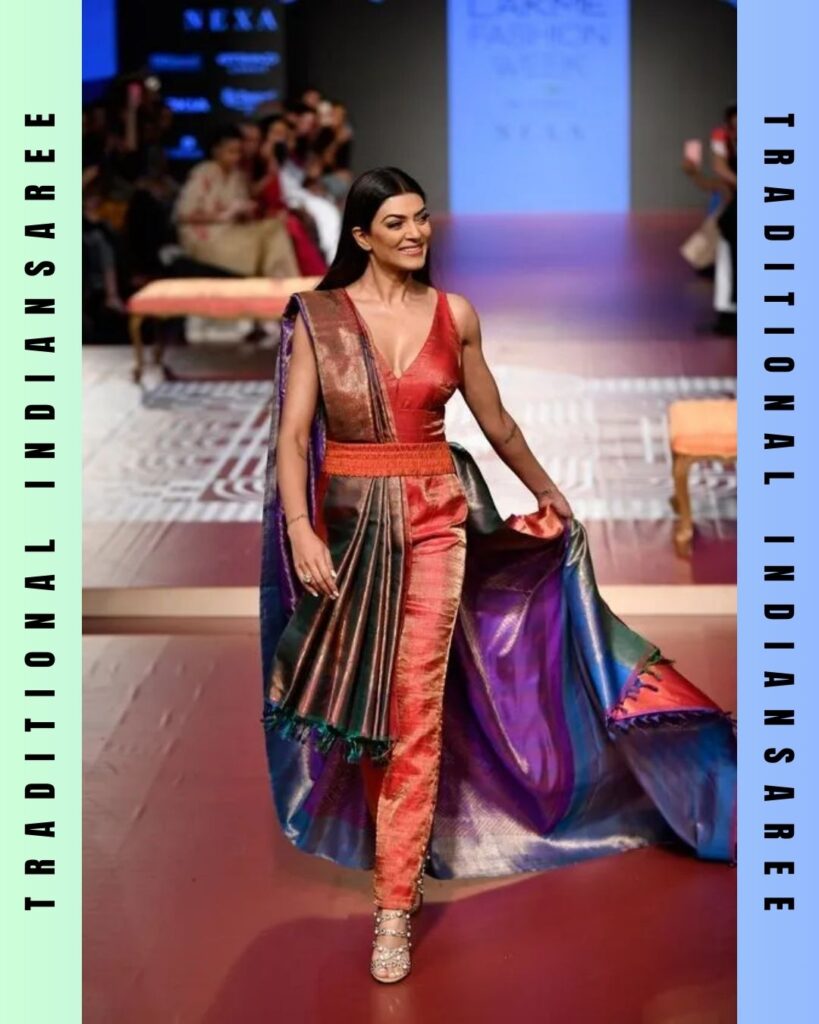
History and Significance
The saree holds a special place in Indian culture, symbolising grace and elegance. With a history dating back centuries, the saree has evolved into various styles and designs, each representing different regions of India. From the Banarasi silk sarees of North India to the Kanjeevaram sarees of South India, the diversity of sarees is vast and awe-inspiring.
Different Types of Sarees
- Banarasi Saree
- Kanjeevaram Saree
- Chanderi Saree
- Paithani Saree
- Bandhani Saree
Salwar Kameez: A Versatile Choice
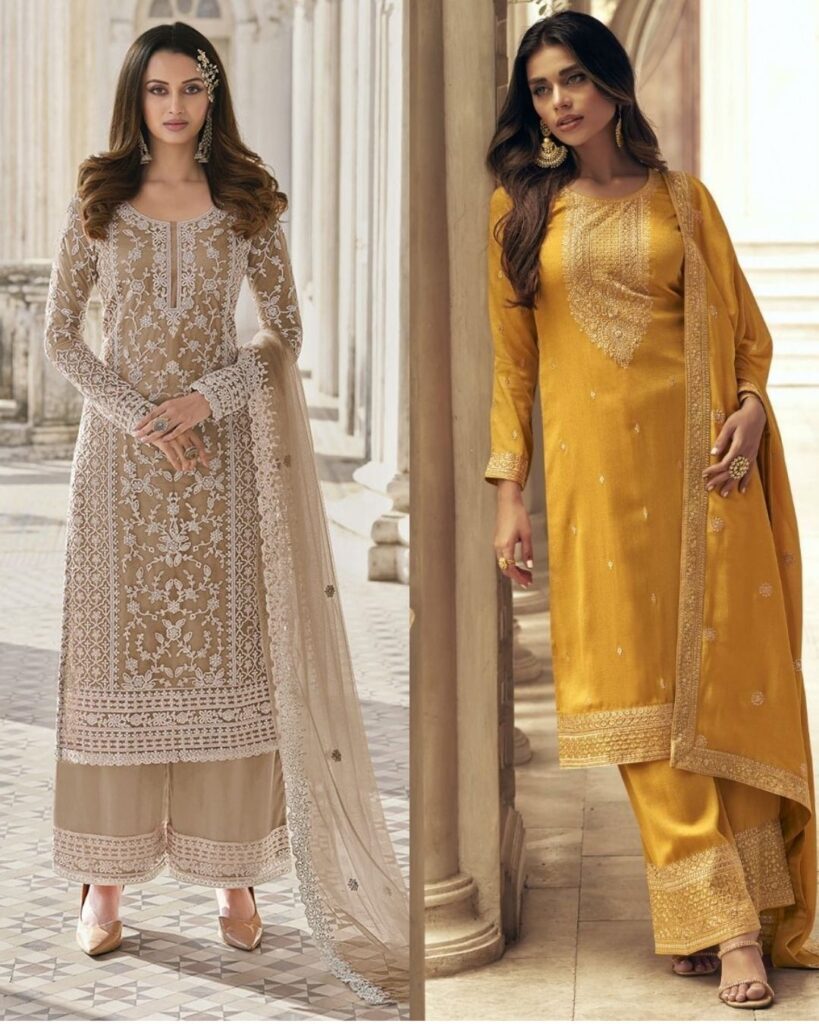
Origins and Cultural Importance
The salwar kameez, originating from the Mughal era, is a traditional Indian outfit known for its comfort and versatility. Consisting of a tunic (kameez), trousers (salwar), and a dupatta, the salwar kameez is worn by women across India for various occasions, from casual gatherings to formal events.
Varieties of Salwar Kameez
- Straight Cut Salwar Kameez
- Anarkali Salwar Kameez
- Palazzo Salwar Kameez
- Punjabi Patiala Salwar Kameez
- Pakistani Salwar Kameez
Lehenga Choli: The Epitome of Grace
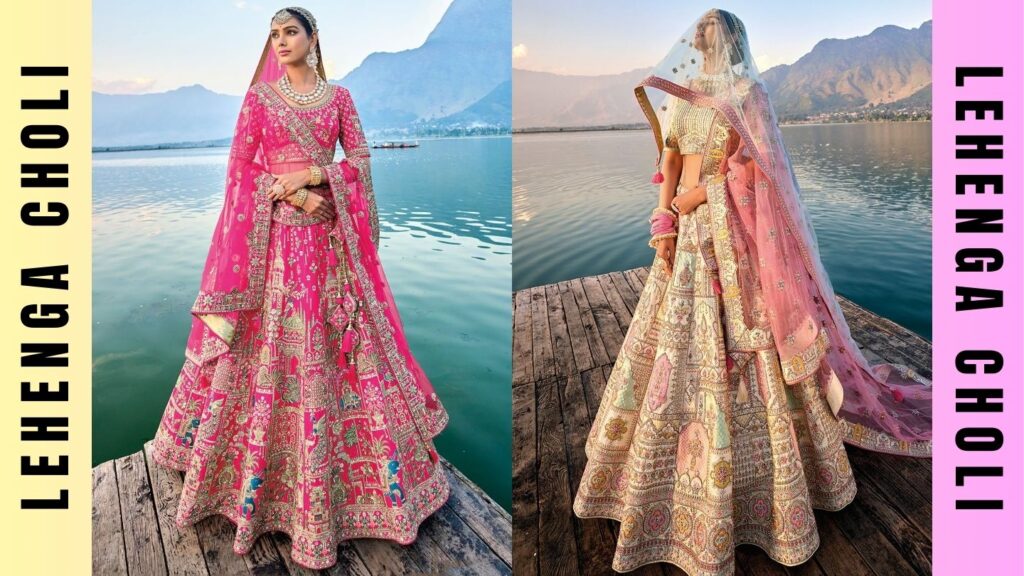
Evolution and Cultural Context
The lehenga choli, a traditional Indian bridal attire, exudes grace and grandeur. Originating from North India, the lehenga choli has evolved over the years, blending traditional craftsmanship with modern designs. It is often adorned with intricate embroidery, sequins, and zari work, making it a favourite choice for weddings and festive occasions.
Types of Lehenga Choli
- A-Line Lehenga
- Mermaid Lehenga
- Flared Lehenga
- Sharara Lehenga
- Jacket Lehenga
Sherwani: The Quintessential Men’s Attire
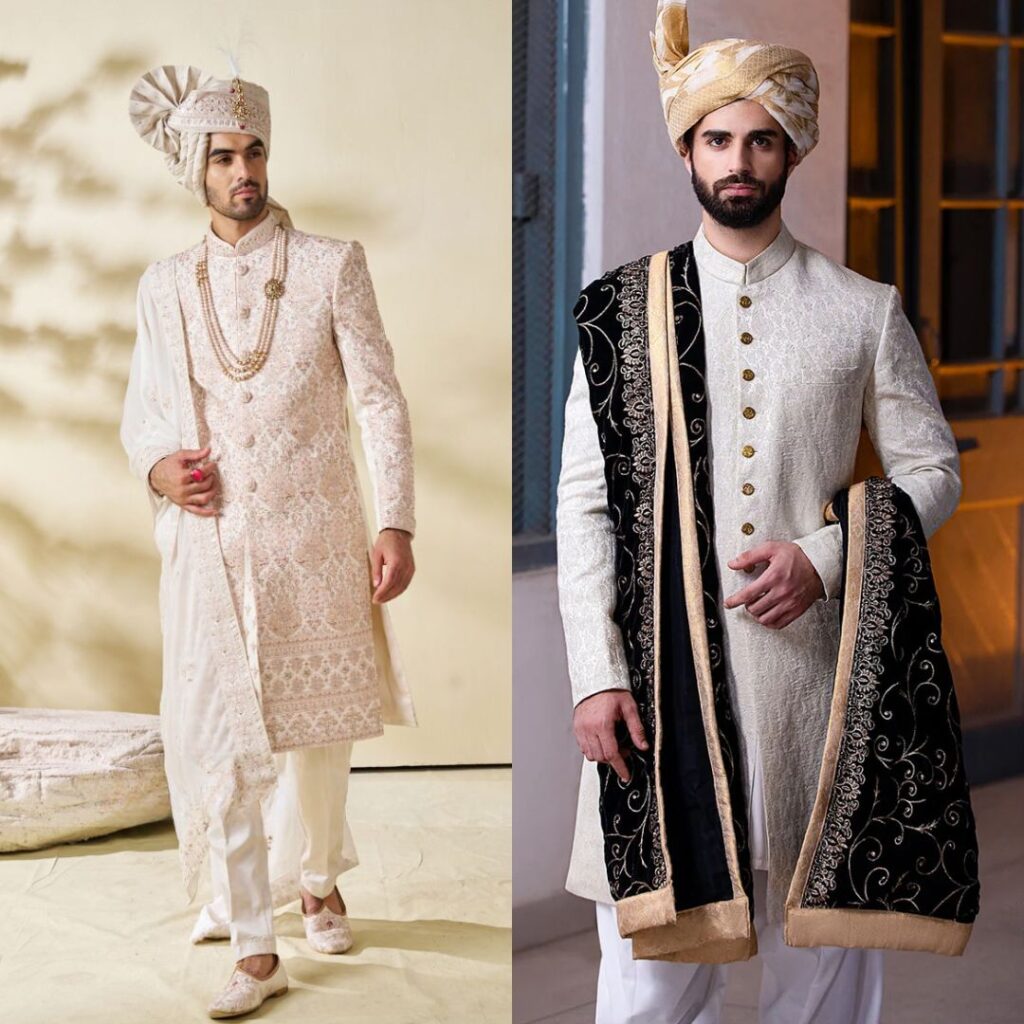
Historical Background
The sherwani is a traditional men’s attire that originated during the Mughal era. It is characterised by its long coat-like silhouette, often embellished with intricate embroidery and embellishments. The sherwani is typically worn with a kurta and churidar or dhoti, making it a popular choice for weddings and formal events.
Variations of Sherwani
- Achkan Sherwani
- Jodhpuri Sherwani
- Indo-Western Sherwani
- Designer Sherwani
- Traditional Sherwani
Anarkali Suit: Timeless Elegance
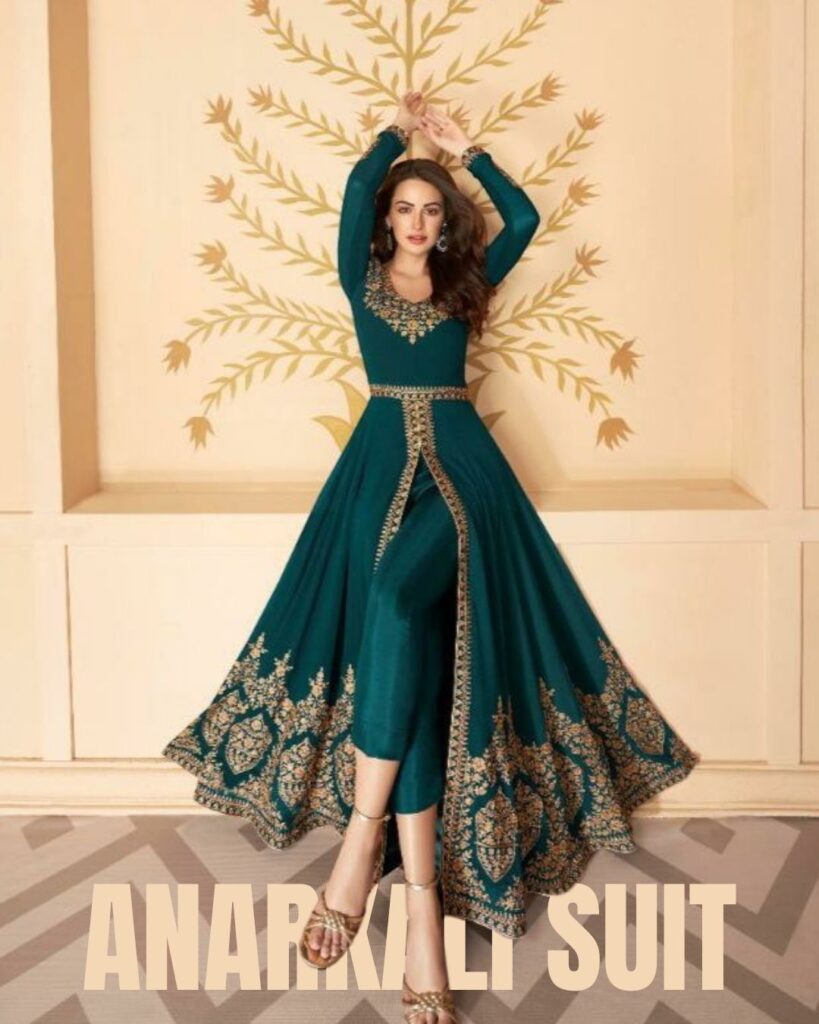
Origin Story
The Anarkali suit is named after the legendary dancer Anarkali and is characterised by its long, flowing silhouette and fitted bodice. It gained popularity during the Mughal era and has since become a staple in Indian fashion. The Anarkali suit is favoured for its timeless elegance and is often worn for weddings, parties, and festive occasions.
Different Styles of Anarkali Suits
- Floor-Length Anarkali
- Short Anarkali
- Jacket Style Anarkali
- Anarkali Gown
- Anarkali Lehenga
Kurti: Comfort Meets Style
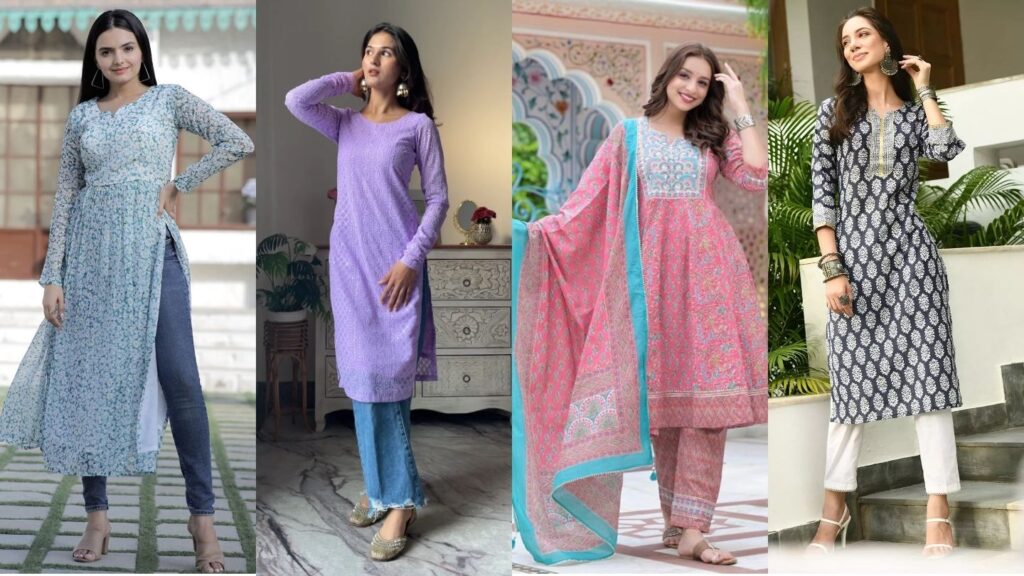
Popularity and Evolution
The kurti is a versatile garment that can be paired with various bottoms, such as leggings, palazzos, or jeans. It is known for its comfort and simplicity, making it a favourite choice for casual wear. Kurtis come in a wide range of designs, from traditional to contemporary, catering to diverse tastes and preferences.
Types of Kurtis
- Straight Kurti
- A-Line Kurti
- Angrakha Kurti
- Shirt Style Kurti
- High-Low Kurti
Dhoti Kurta: Traditional Men’s Wear
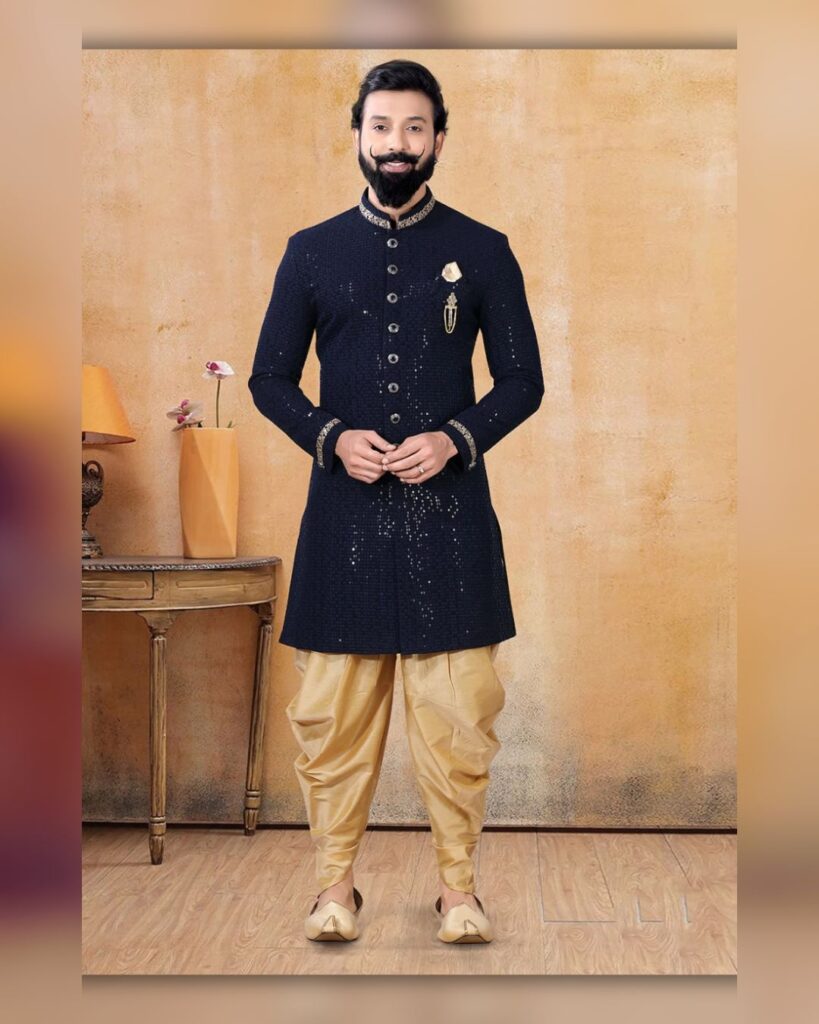
Cultural Significance
Embraced during festive gatherings and religious rituals, the dhoti kurta stands tall as a quintessential emblem of Indian tradition, predominantly adorning men. This ensemble comprises a gracefully draped dhoti around the lower limbs, harmonised with a kurta elegantly draped over the torso. Amidst the ever-evolving currents of contemporary fashion, the enduring allure of the dhoti kurta resonates as a steadfast beacon of cultural legacy and pride.
Modern Adaptations
- Dhoti Style Pants
- Kurta with Nehru Jacket
- Dhoti with Sherwani
- Fusion Dhoti Kurtas
- Dhoti with Waistcoat
Indo-Western Fusion: Bridging Cultures
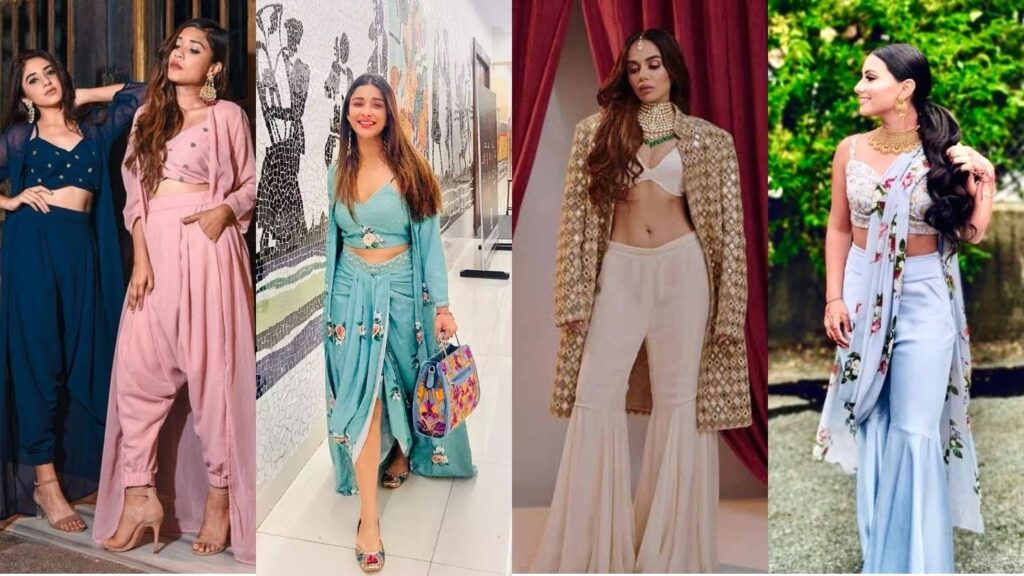
Blend of Traditional and Contemporary Styles
Indo-Western outfits blend elements of Indian and Western fashion, creating a unique and stylish look. From fusion sarees to Indo-Western gowns, these outfits are popular among modern Indians who seek to embrace both their cultural roots and global influences.
Examples of Indo-Western Outfits
- Saree Gown
- Kurti with Jeans
- Sherwani with Trousers
- Lehenga with Crop Top
- Dhoti Pants with Shirt
Bridal Attire: Rich in Tradition
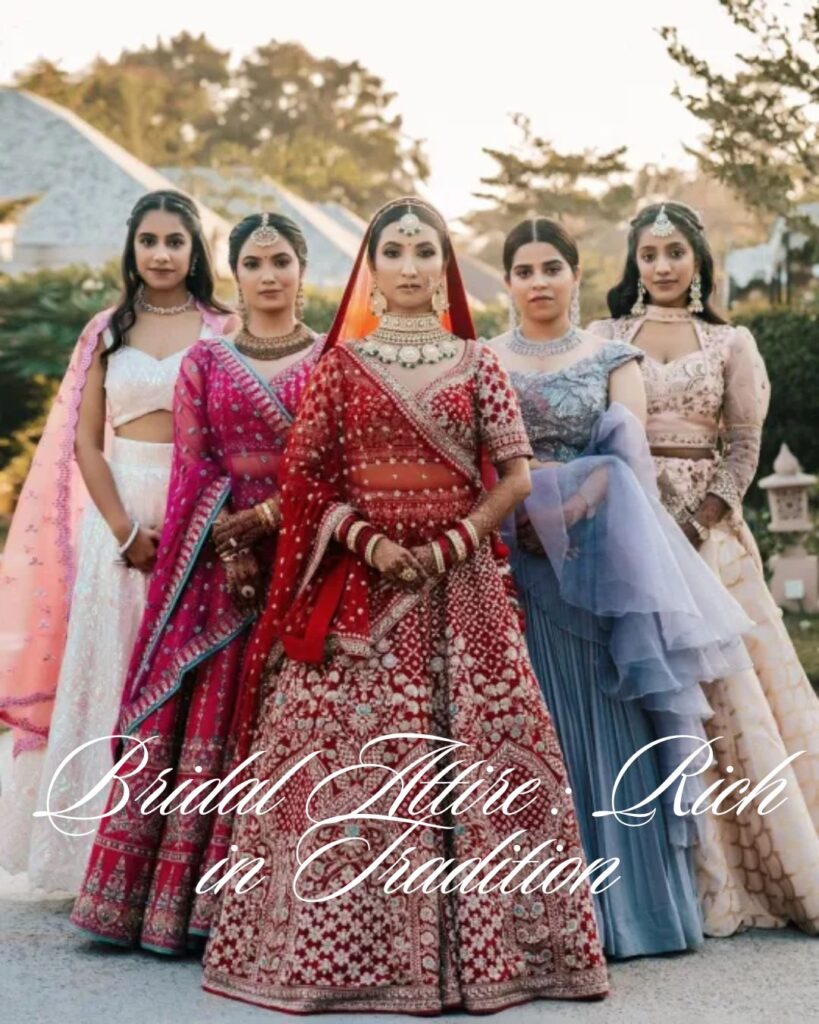
Traditional Bridal Wear Across India
Indian bridal attire varies greatly depending on the region and cultural customs. From the red and gold bridal sarees of North India to the silk kanjeevarams of South India, each region has its unique bridal traditions and attire.
Modern Trends in Bridal Fashion
- Pastel Color Lehengas
- Floral Embroidery
- Cape Dupattas
- Off-shoulder Blouses
- Minimalistic Jewellery
Accessories: Adding Flair to Outfits
Jewellery
Delve into the world of Indian jewellery, where every piece narrates a story of intricate craftsmanship and artistic finesse. From the resplendent allure of Kundan sets to the timeless elegance of Polki necklaces, each ornament weaves itself seamlessly into the fabric of Indian attire, elevating its beauty to celestial heights.
Footwear
Matching footwear completes the Indian ensemble. From traditional juttis to embellished heels, there are endless options to complement different outfits.
Bags and Clutches
Accessorising with a stylish bag or clutch adds a finishing touch to the outfit. From embroidered potlis to sleek clutches, these accessories add flair and functionality.
Regional Variations in Indian Attire
North India
North Indian attire is known for its vibrant colours and intricate embroidery. Traditional outfits like the saree, lehenga choli, and salwar kameez are popular choices for weddings and festivals.
South India
South Indian attire is characterised by its rich silk fabrics and gold jewellery. Kanjeevaram sarees, temple jewellery, and jasmine flowers are iconic elements of South Indian fashion.
East India
East Indian attire is influenced by its cultural diversity. Assam silk sarees, Bengal cotton sarees, and Muga silk fabrics are popular choices for traditional wear.
West India
West Indian attire is known for its vibrant prints and bold colours. Bandhani sarees, mirror work lehengas, and embroidered kurtas are commonly worn during festivals and celebrations.
Influence of Bollywood on Indian Fashion
Iconic Movie Outfits
The fashion trends of India are undoubtedly shaped by Bollywood movies. Usually, new fashion standards are set after iconic clothes worn by Indian actors who consequently become a source of inspiration to many people.
Trends Set by Bollywood Celebrities
From red carpet events to promotional appearances, Bollywood celebrities are trendsetters in the world of fashion. Their unique sense of style influences clothing choices and trends among the masses.
Sustainable Fashion in Indian Attire
Rise of Eco-Friendly Materials
In the wake of escalating environmental apprehensions, there emerges an insistent call for sustainable fashion within the Indian landscape. Witnessing a surge in interest are eco-conscious materials such as organic cotton, bamboo silk, and repurposed fabrics, garnering favour among discerning consumers prioritising ecological integrity.
Ethical Practices in the Fashion Industry
Many Indian fashion brands are embracing ethical practices, from fair trade sourcing to eco-friendly manufacturing processes. By prioritising sustainability and ethicality, these brands are leading the way towards a more responsible fashion industry.
Adopting ethical practices is becoming more and more popular in the Indian fashion sector. This is from the use of fairly traded materials to the production of eco-friendly textiles. Hence, we are seeing that through focusing on sustainability and ethics in production methods, they are showing us how one can become part of an accountable fashion scenario.

1 thought on “A Guide to Different Types of Indian Dresses”
Comments are closed.